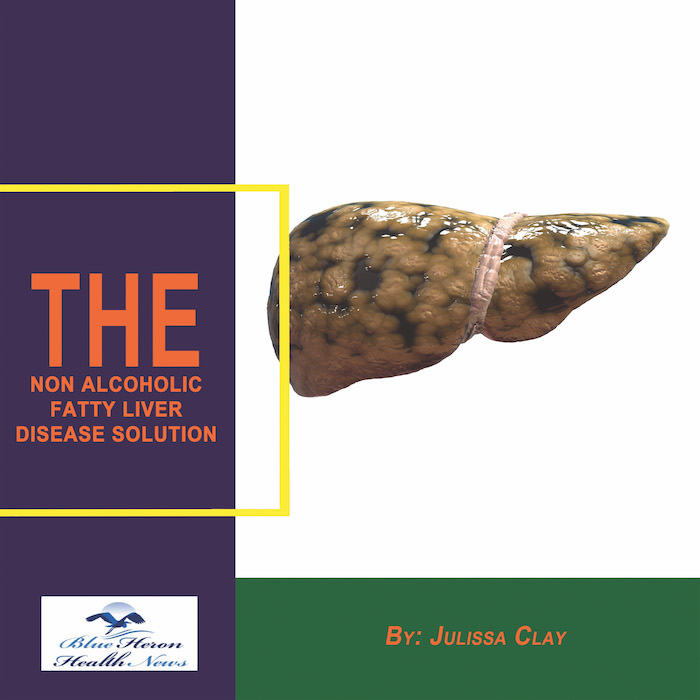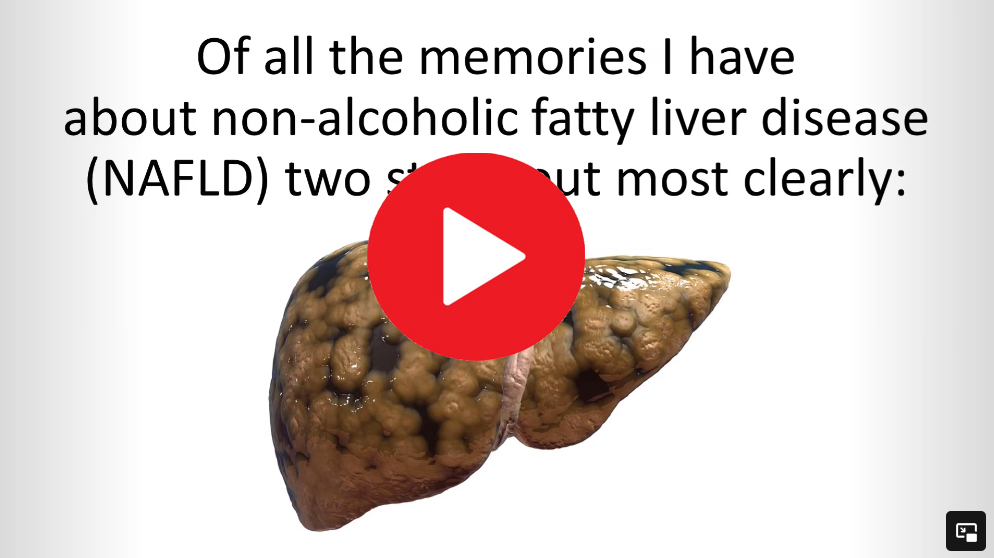This eBook from Blue Heron Health NewsBack in the spring of 2008, Christian Goodman put together a group of like-minded people – natural researchers who want to help humanity gain optimum health with the help of cures that nature has provided. He gathered people who already know much about natural medicine and setup blueheronhealthnews.com. Today, Blue Heron Health News provides a variety of remedies for different kinds of illnesses. All of their remedies are natural and safe, so they can be used by anyone regardless of their health condition. Countless articles and eBooks are available on their website from Christian himself and other natural health enthusiasts, such as Julissa Clay , Shelly Manning , Jodi Knapp and Scott Davis.
|
The Role of Patient Education in Fatty Liver Treatment
Patient education is critical in treating and managing fatty liver disease (FLD). Educated patients can make smart health choices, engage actively with treatment plans, and adopt life changes that may impede disease progression. Presented below is the summary of how patient education may help in managing fatty liver for treatment:
1. Facilitating Understanding of the Disease
Simple Explanation of Fatty Liver Disease: Informing patients about what fatty liver disease is, as well as the distinction between non-alcoholic fatty liver disease (NAFLD) and non-alcoholic steatohepatitis (NASH), provides them with a clear understanding of the severity and possible implications of the disease. Knowing how fat builds up in the liver and the involvement of metabolic factors (e.g., obesity, diabetes, high cholesterol) is fundamental to understanding why lifestyle modification is important.
Understanding Risks and Progression: Educating patients regarding the risks of untreated fatty liver disease—e.g., progression to cirrhosis, liver failure, or liver cancer—allows them to grasp the importance of early intervention and ongoing management.
2. Encouraging Lifestyle Changes
Dietary Modifications: Dietary modifications are most likely the most significant aspect of managing fatty liver. Patient education should emphasize eating a balanced, nutrient-rich diet with minimal processed sugar, unhealthy fats, and refined carbohydrates. Doctors or nutritionists can help patients learn what foods to consume (i.e., fruits, vegetables, lean proteins, healthy fats) and what to avoid or limit as much as possible (e.g., fried foods, sodas, alcohol).
Weight Reduction and Its Impact: Weight management is typically vital in the treatment of fatty liver disease, especially for NAFLD patients. Patients must be taught the importance of gradual weight loss (via diet and exercise). Patients will find that minimal weight loss (5-10% of body weight) significantly reduces liver fat and enhances liver function.
Exercise Recommendations: Educating patients about the role of frequent exercise—specifically aerobic activity and resistance exercises—can help promote improved liver function through reduction in liver fat and overall metabolic wellness. Educating patients about the amount and type of exercise that is appropriate for them can incentivize increased physical activity.
3. Management of Comorbidity
Control of Hypertension and Diabetes: Since diseases like hypertension and diabetes are highly associated with fatty liver disease, patients should be educated about the control of these diseases. Patients should be made aware of the importance of blood sugar control, blood pressure control, and lipid control for the prevention of liver injury.
Medication Adherence: Comorbid therapy for patients with fatty liver disease (e.g., statin for hypercholesterolemia or metformin for diabetes) Informing patients as to how these medications are good for the liver and why they must take them as directed ensures that both the liver disease and the underlying disease are better managed.
4. Empowering Patients to Make Informed Decisions
Informed Choices about Treatments: Patient education allows patients to understand therapies to which they have access, pharmacologic (in the case of diabetes or high cholesterol) or lifestyle. This empowers patients to make their own decisions about treatment, i.e., when to start drugs or focus on diet and exercise.
Understanding Monitoring and Tests: Informing patients about the tests used to monitor fatty liver disease—e.g., liver function tests, imaging, (ultrasound, MRI), or biopsy—helps them realize why follow-up care is crucial and what each test is assessing.
5. Motivating Long-Term Commitment to Health
Achieving Consistency Awareness: Fatty liver disease is a chronic illness, and patient education can induce feelings of responsibility and commitment to sustained lifestyle change. Patients will more likely adhere to diet, exercise, and follow-up if they have an understanding of the ramifications of non-adherence (e.g., cirrhosis or cancer of the liver).
Goal Setting and Monitoring Progress: Patient education may assist individuals in establishing realistic goals for weight loss, exercise, and other lifestyle changes. Additionally, patient education on tracking progress—e.g., keeping a food diary or monitoring activity levels—may increase feelings of success and motivation.
6. Reducing Stigma and Emotional Support
Emotional and Psychological Care: These patients with fatty liver disease may feel overwhelmed, especially if they are presenting with comorbid chronic illnesses like diabetes or obesity. Normalization education for coping with stress, emotional eating, or managing chronic illness may enable the patient to hold onto hope. Emotional well-being needs to be addressed, and resources such as counseling or support groups should also be provided to facilitate total care.
Reducing Stigma: Fatty liver disease, particularly non-alcoholic fatty liver disease (NAFLD), is often associated with lifestyle issues like diet and obesity, which can be stigmatizing. Educating patients regarding the multifactorial etiology of fatty liver disease can reduce shame or guilt feelings and promote a more empathetic, supportive treatment attitude.
7. Accessing Resources and Support
Connecting Patients to Supportive Services: Patient education can make it easier for patients to access supportive services like dietitians, physical therapists, or support groups. Patient education can sometimes involve connecting patients with local or online support groups who live with fatty liver disease, where they can share experiences and coping strategies.
Referral to Specialists: Referral of patients to specialists, either a hepatologist or a gastroenterologist, should be done if fatty liver disease is progressing or when complications are suspected. Patient education regarding when to refer patients to specialists helps them receive proper care at the right time.
8. The Role of Healthcare Providers in Patient Education
Clear and Effective Communication: Fatty liver disease information should be communicated in plain language by healthcare providers. The use of layperson’s language, visual aids, and written materials would enhance the comprehension of patients.
Fostering a Partnership Relationship: Getting questions answered, voicing concerns, and having an active involvement in their treatment plan empowers patients. It guarantees that the patients are not just following what has been ordered but are having an active voice in managing their condition.
Conclusion
Patient education is the basis of effective management of fatty liver disease. With greater patients’ awareness of their condition, enabling them to make informed choices, and enabling lifestyle modifications, education assists improved outcomes and reduces long-term disease hazards. Healthcare professionals play an important part in this process in that they ensure that patients are given clear, comprehensible information and ongoing support. The more informed and engaged a patient is, the greater opportunity he has to efficiently cure fatty liver disease and improve his health.
The Non Alcoholic Fatty Liver Strategy™ By Julissa Clay The problem in the fatty liver can cause various types of fatal and serious health problems if not treated as soon as possible like the failure of the liver etc. The risks and damage caused by problems in the non-alcoholic liver with fat can be reversed naturally by the strategy provided in this eBook. This 4-week program will educate you about the ways to start reversing the risks and effects of the disease of fatty liver by detoxing your body naturally. This system covers three elements in its four phases including Detoxification, Exercise, and Diet.
This eBook from Blue Heron Health NewsBack in the spring of 2008, Christian Goodman put together a group of like-minded people – natural researchers who want to help humanity gain optimum health with the help of cures that nature has provided. He gathered people who already know much about natural medicine and setup blueheronhealthnews.com. Today, Blue Heron Health News provides a variety of remedies for different kinds of illnesses. All of their remedies are natural and safe, so they can be used by anyone regardless of their health condition. Countless articles and eBooks are available on their website from Christian himself and other natural health enthusiasts, such as Julissa Clay , Shelly Manning , Jodi Knapp and Scott Davis. |

